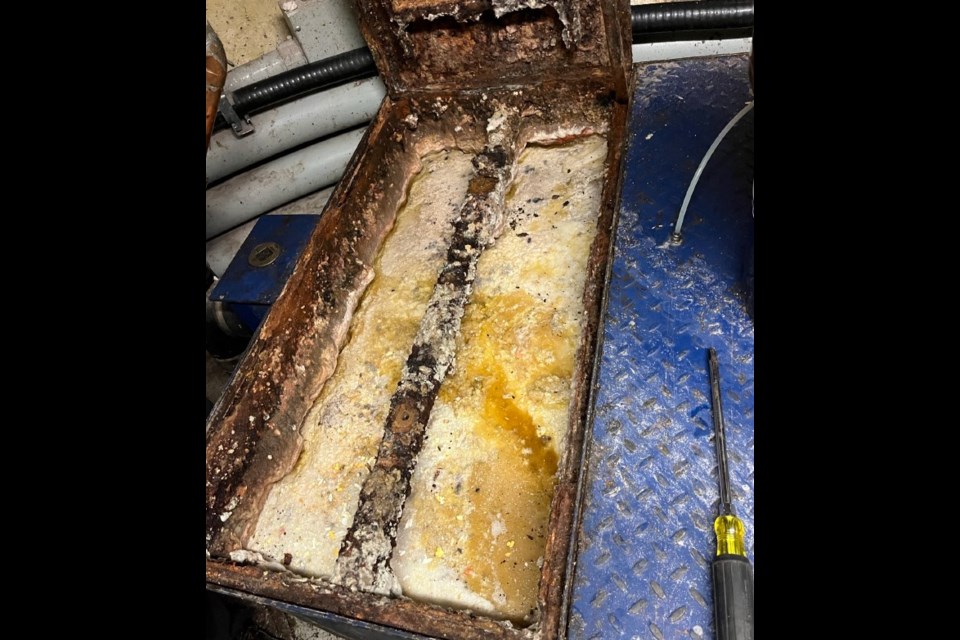THUNDER BAY — Ian Morgan knows perhaps better than anyone else in the city why it's crucial that local restaurants empty their grease traps (also called oil & grease interceptors) regularly, and keep them well-maintained.
He's the chief chemist for the City of Thunder Bay's Environment Division, and has first-hand knowledge of how fats, oils and grease can stick to the sides of sanitary sewer pipes, causing backups in a restaurant or an even larger-scale ones, like the incident earlier this month on Arthur Street.
If a business is found to be the root cause of a backup, it could be liable for clean-up costs, and charges could be laid.
Under a city by-law grease interceptors should be serviced before the depth of fats, oils and grease exceeds 25 per cent of the liquid volume of the trap.
This is the industry standard, and achieving it usually requires cleaning interceptors at least four times a year.
But Morgan said the schedule is very much dependent on how much traffic a restaurant has.
"I usually say 'If your cash register is full, that means your grease trap is full as well.' The more business you have, the more frequently you need to maintain the trap."
Grease interceptors are required in all restaurants under the Ontario Building Code.
They work by using gravity to separate oil and grease from water, so the unwanted material floats to the top while the water flows through the bottom. The separated oil and grease is then collected in a chamber where it can be disposed of properly.
Records for all inspections, hauling, maintenance and clean-outs performed by either the owner or a licensed service provider must be kept on file for at least three years.
Morgan said the environment division has also been working hard to encourage all restaurants to participate in the voluntary Fats, Oils and Grease (FOG) reporting program.
It uses a cloud-based monitoring system called Swift Comply to help businesses stay in compliance with the city's sewer-use bylaw, and is free to use by restaurants and waste-haulers that do the clean-outs of interceptors.
"FOG has been an issue in pretty much every municipality in the province," Morgan said. "We're just trying to be proactive and get ahead of the times, using new technology with respect to reporting, as well as inspecting restaurants and just educating them on proper maintenance and the frequency of cleaning of the traps."
He noted that the online reporting system negates the need for maintain on-premises clean-out records, and helps the city's compliance and quality control team focus its inspections on restaurants that are not participating in the program.
"The environment division has deployed many communication efforts with all the restaurants in the city through letters, emails, postcards, and trifolds. I can tell you we have a 45.7 per cent adoption rate right now. Ideally, closer to 100 per cent would be fantastic, but the more communications efforts we provide, the more join in."
